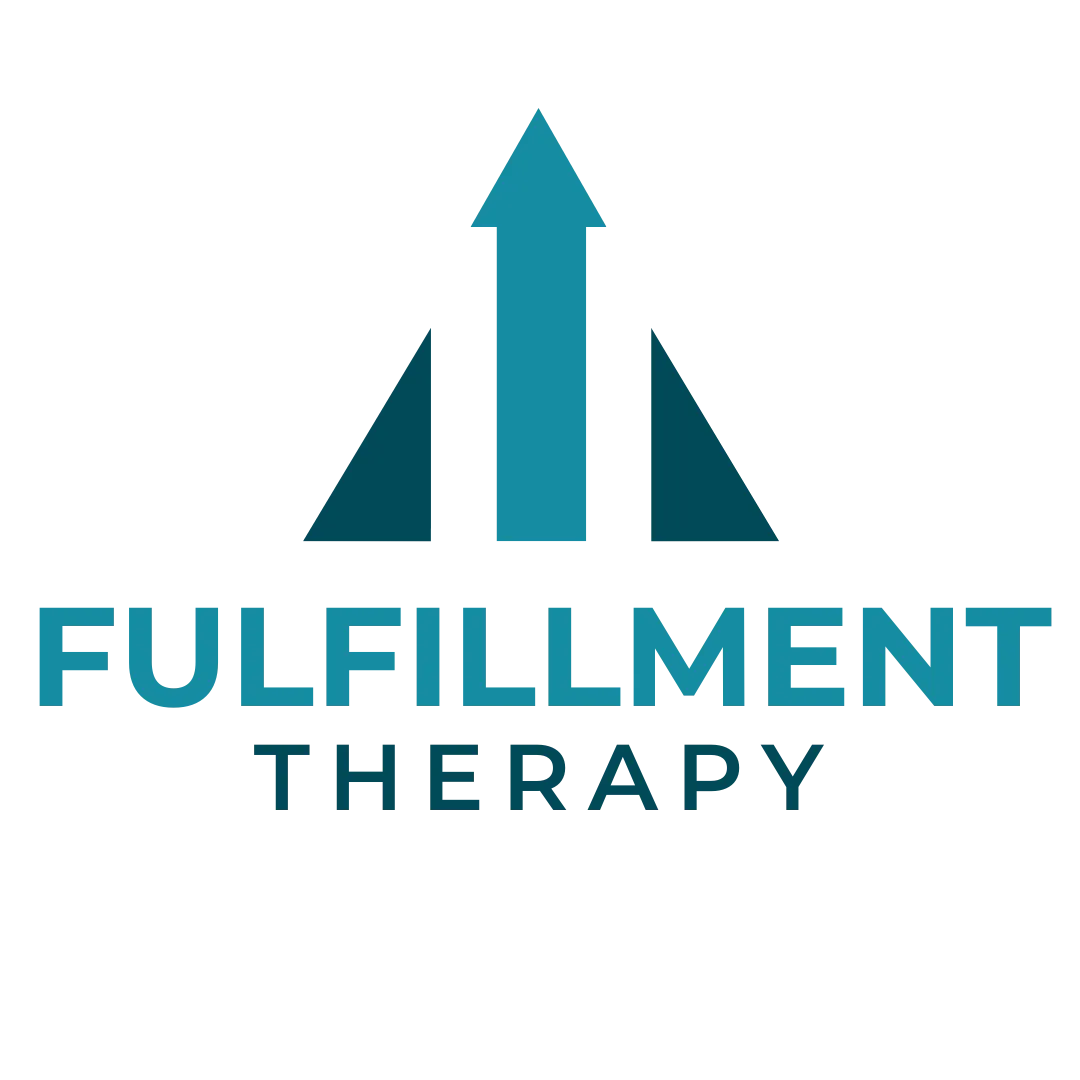
Escaping the Family Drama Triangle: Breaking Free from Toxic Roles
Creating Family Peace: Breaking Free from the Drama Triangle
Have you ever felt like your family life is stuck in an endless cycle of conflict, blame, and frustration? You're not alone. As parents and spouses, we often find ourselves caught in patterns that drain our energy and leave us feeling unfulfilled. But what if I told you there's a way to break free from these exhausting dynamics and create a more harmonious, fulfilling family life?
Enter the Drama Triangle – a powerful concept that can transform your relationships and help you rediscover the joy in parenting and partnership. As a therapist and fellow parent, I'm excited to share this eye-opening model with you. It's a game-changer that can help you and your loved ones find more enthusiasm and passion in your daily lives.
Understanding the Drama Triangle
The Drama Triangle, developed by Dr. Stephen Karpman, is a social model that describes three roles people often play in stressful or high-conflict situations:
The Victim: Feels powerless and at the mercy of circumstances
The Persecutor (or Villain): Blames or criticizes others
The Rescuer (or Hero): Swoops in to save the day, often enabling the victim
These roles create a cycle of blame, defensiveness, and temporary fixes that never address the root issues. Sound familiar? Let's look at how this might play out in a typical family scenario:
Imagine it's a weeknight at the Adams house. Jen, who works from home part-time and is also a stay-at-home mom, is exhausted. Her husband Jake is on the couch, scrolling on his phone. The kids are fighting, and the kitchen is a disaster from after-school snacks. Frustration rising, Jen snaps at Jake, "Can't you see that I need help? You never pitch in when I need it!" Jake, feeling attacked, retorts, "I've been busy all day too, you know. You always make me out to be the bad guy." Meanwhile, their 10-year-old starts crying, saying, "Stop fighting! It's all my fault! I made the mess in the kitchen!"
In this scenario, Jen takes on the Persecutor role, Jake becomes the Victim, and their child attempts to be the Rescuer. This dynamic creates a cycle that reinforces the problem rather than resolving it.
Dr. Stephen Karpman explains,
"The Drama Triangle is a model of dysfunctional social interaction. Each player in the triangle has their own beliefs and behaviors that reinforce the problem rather than resolve it."
Recognizing the Drama Triangle in Your Family
To break free from this cycle, we first need to recognize how it manifests in our families. Here are some common examples:
The Victim:
A parent constantly complaining about their child's behavior without taking action
A spouse feeling helpless about marriage problems
The Persecutor:
A parent frequently criticizing their child's efforts or achievements
A partner blaming their spouse for all relationship issues
The Rescuer:
A parent always doing their child's homework or solving their problems
A spouse repeatedly bailing out their partner from financial troubles without addressing spending habits

Breaking Free: The Empowerment Dynamic
The good news is that we can escape this cycle by shifting to what Dr. David Emerald calls the Empowerment Dynamic. This involves moving from:
Victim to Creator
Persecutor to Challenger
Rescuer to Coach
David Emerald states,
"The empowerment dynamic offers an antidote to the drama triangle. It's about moving from a reactive stance to a creative orientation."
Let's revisit our earlier scenario with the Adams family, but this time through the lens of the Empowerment Dynamic:
Jen recognizes her tendency to blame and instead takes a deep breath. She says, "I'm feeling overwhelmed. Can we talk about how to manage our evenings better?" She becomes a Creator, focusing on solutions rather than reacting.
Jake, instead of feeling attacked, responds, "You're right. Let's figure this out together. What if we created a chore chart for the whole family?" He shifts from Victim to Challenger, offering constructive ideas.
Their daughter, seeing her parents working together, asks, "How can I help? Can I be in charge of setting the table each night?" She becomes part of the solution instead of trying to rescue everyone.
Implementing the Empowerment Dynamic in Your Family
Here are some key steps to help you and your family break free from the Drama Triangle:
Cultivate Self-Awareness: Notice when you're slipping into Drama Triangle roles. Are you blaming, feeling powerless, or rushing to fix things?
Pause and Reflect: Before reacting, take a moment to consider a more constructive response.
Use "I" Statements: Express your feelings and needs without sarcasm or blame. For example, "I feel overwhelmed when I come home to a messy house" instead of "You never clean up."
Encourage Problem-Solving: Guide your children or spouse to find their own solutions instead of always rescuing them.
Practice Active Listening: Really hear what your family members are saying without immediately jumping in to fix things. Offer empathy and validation before moving to solutions.
Thomas Crum wisely noted,
"The quality of our lives depends not on whether we have conflicts, but on how we respond to them."
By implementing these strategies, we can transform our family dynamics and create a more fulfilling home life.
The Impact of Breaking Free from the Drama Triangle
When families shift from the Drama Triangle to the Empowerment Dynamic, the results can be transformative. Let's look at another example to illustrate this change:
The Garcia family often found themselves trapped in the Drama Triangle. Maria, a working mom, felt like a Victim, overwhelmed with household responsibilities. Her husband Carlos would criticize her for not managing things well, taking on the Persecutor role. Their teenage son, Alex, tried to keep the peace by taking on extra chores, acting as the Rescuer.
By applying the principles of the Empowerment Dynamic, their family dynamic shifted dramatically:
Maria started expressing her needs clearly and taking charge of her schedule, becoming a Creator.
Carlos began offering support and suggestions instead of criticism, evolving into a Challenger.
Alex learned to contribute without feeling responsible for his parents' relationship, finding a healthier balance.
The result? A more harmonious home with improved communication, shared responsibility, and increased collaboration.

Long-Term Benefits for Your Family
Implementing these changes can have far-reaching effects on your family:
Improved Emotional Intelligence: By modeling healthy communication and problem-solving, you're teaching your children valuable life skills.
Stronger Relationships: As you break free from blame and criticism, you'll foster deeper connections with your spouse and children.
Increased Personal Growth: Shifting from reactive roles to proactive ones encourages personal development for everyone in the family.
Reduced Stress and Conflict: A home free from constant drama is a more peaceful and nurturing environment.
Better Work-Life Balance: As you learn to express needs and set boundaries, you'll find it easier to balance family responsibilities with personal and professional goals.
Modeling Healthy Self-Care: By prioritizing your needs alongside those of your family, you're showing your children the importance of self-care and personal fulfillment.
Overcoming Challenges
Breaking free from the Drama Triangle isn't always easy. You might face resistance from family members who are comfortable in their roles, or find yourself slipping back into old patterns. Remember, this is a process, and it takes time and practice.
Here are some tips for overcoming challenges:
Be Patient: Change doesn't happen overnight. Celebrate small victories and keep working at it.
Stay Consistent: Even if others aren't on board immediately, consistently modeling the new behavior can inspire change.
Seek Support: Consider family therapy or coaching to help navigate this transition.
Practice Self-Compassion: Be kind to yourself when you slip up. It's part of the learning process.
Conclusion: Your Path to Family Fulfillment
As we've explored the Drama Triangle and the Empowerment Dynamic, it's clear that the path to family fulfillment isn't about avoiding conflicts or being perfect parents and partners. Instead, it's about how we respond to challenges and the roles we choose to play in our family dynamics.
By shifting from Victim to Creator, Persecutor to Challenger, and Rescuer to Coach, we open up new possibilities for growth, connection, and joy within our families. We create a legacy of emotional intelligence for our children and break generational patterns of dysfunction.
Remember, this journey is about progress, not perfection. Each step you take towards breaking free from the Drama Triangle is a step towards a more fulfilling family life. It's about creating a home where everyone's needs matter, where healthy boundaries are respected, and where each family member can nurture their gifts and talents alongside one another.
As you implement these changes, you're not just solving day-to-day conflicts; you're laying the foundation for a lifetime of healthier relationships and personal growth. You're showing your children what it means to live authentically and to face life's challenges with creativity and resilience.
So, take that deep breath, pause before reacting, and choose your role wisely. Your family's journey to greater fulfillment and harmony begins with you. Embrace the power of the Empowerment Dynamic, and watch as your family life transforms into the fulfilling, joyful experience you've always envisioned.
Join us on Fulfillment Therapy, where you'll find healing, wellness, and the tools needed to live a life you can't wait to wake up to. Together, we can create positive ripples of change and help others ignite their lives with lasting joy and fulfillment.
Thanks for reading and listening and shine boldly and brightly, my friends!
Connect with Kendra:🤗
ALL LINKS → https://linktr.ee/fulfillmenttherapy
Website → https://fulfillmenttherapy.org
Contact → hello@fulfillmenttherapy.org
Instagram → @fulfillmenttherapy
Facebook Community → http://bit.ly/fulfillmenttherapy
Facebook Group → Private FB Group
Schedule 1:1 Coaching → https://fulfillmenttherapy.org/1-on-1-coaching
Chat → 1-986-910-5172 *text questions & topic requests




